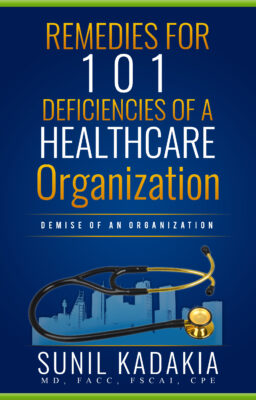Introduction
In health care, the days of “business as usual” are over. Around the world, every health care system is struggling with rising costs and inequality despite the hard work of well-intention-ed, well-trained clinicians. Health care leaders and policymakers have tried many incremental fixes—attacking fraud, reducing errors, enforcing practice guidelines, making patients better “consumers,” implementing electronic medical records—but none have had much impact.It is time for a fundamentally new strategy:At its core, is maximizing value for patients; that is, achieving the best outcomes at the lowest cost. We must move away from a supply-driven health care system organized around what physicians do and toward a patient-centered system organized around what patients need. We must shift the focus from the volume and profitability of services provided—physician visits, hospitalizations, procedures, and tests—to the patient outcomes achieved.
Sometimes, management allows suggestions from personnel with no medical or financial training. Without fundamental skills, they adopt such an uninformed decision, and catastrophic failure of the healthcare enterprise is imminent. Economic reinvestment focused on less critical issues, leave the health facility in a vulnerable financial state. Some managers fail terribly by prioritizing less impactful duties. Such functions would accomplish far less when compared to others. Time efficiency in the 21st century is costly, and therefore, such business put themselves at the risk of untimely completion of tasks. Businesses, particularly the health care industry, are constantly facing hurdles. Whether expected or unexpected, and no matter the direction we pursue, without a plan and a comprehensive understanding of the company, one can quickly fall victim to organizational demise.
We live in a dynamic business environment. Consider that in every generation, organizations must adopt new markets, technology, and policies. As businesses expand, various problems and opportunities emerge that require different solutions. Identifying and providing a remedy to various shortcomings related to growth is crucial for a company to continue growing. Health care facilities face financial, resources, employee, legal, management, social, political, technological, and ethical issues. These challenges affect the smooth operation of a hospital. Human resources are the greatest asset of any organization. Most importantly, to ensure that the management decisions that we make today do not result in more problems in the future, investing in a good leader will assist a business to utilize the most of an opportunity which results in a sustainable expansion in the future. Organizations must be on their toes to ensure that patients are fully satisfied and that they do not lose the market to competitors who are eagerly waiting to convert their customers. The finance unit should develop a financial plan that can fulfill organizational expenses. Finally, the management should create a conducive working environment which helps to motivate employees.Preventing organizational demise in the health care industry can be achieved.
My hope is to provide a comprehensive overview of the strategies every business can apply, the importance of expecting the unexpected and understanding the importance of leadership styles, employee contributions and ethical practices.
